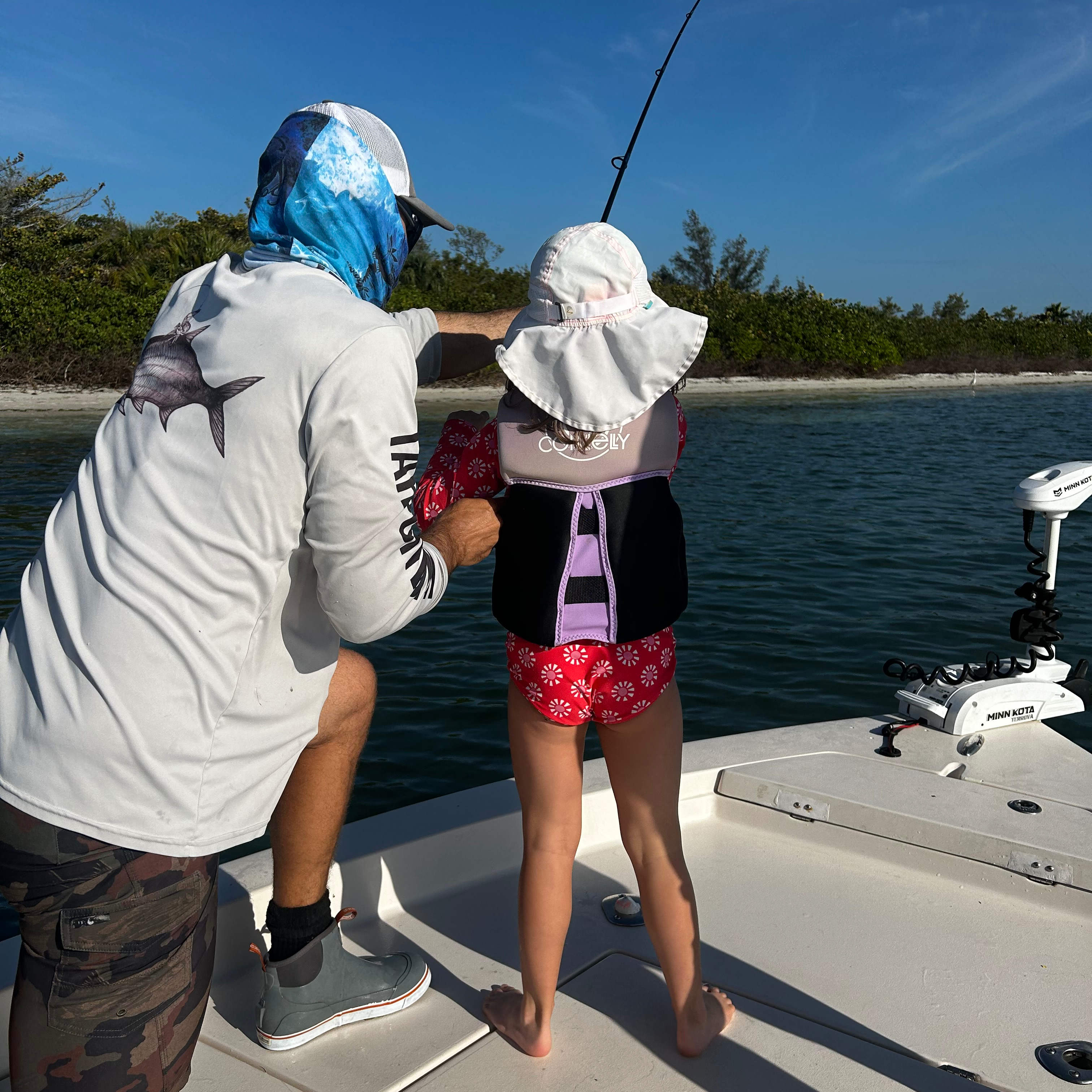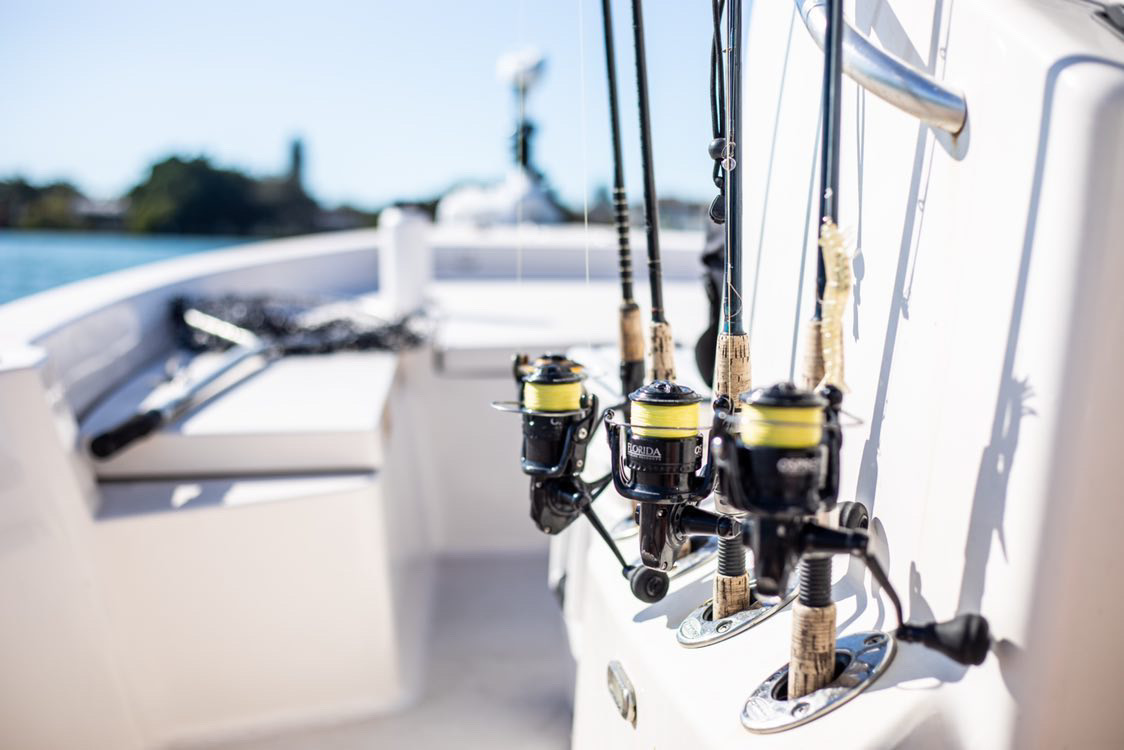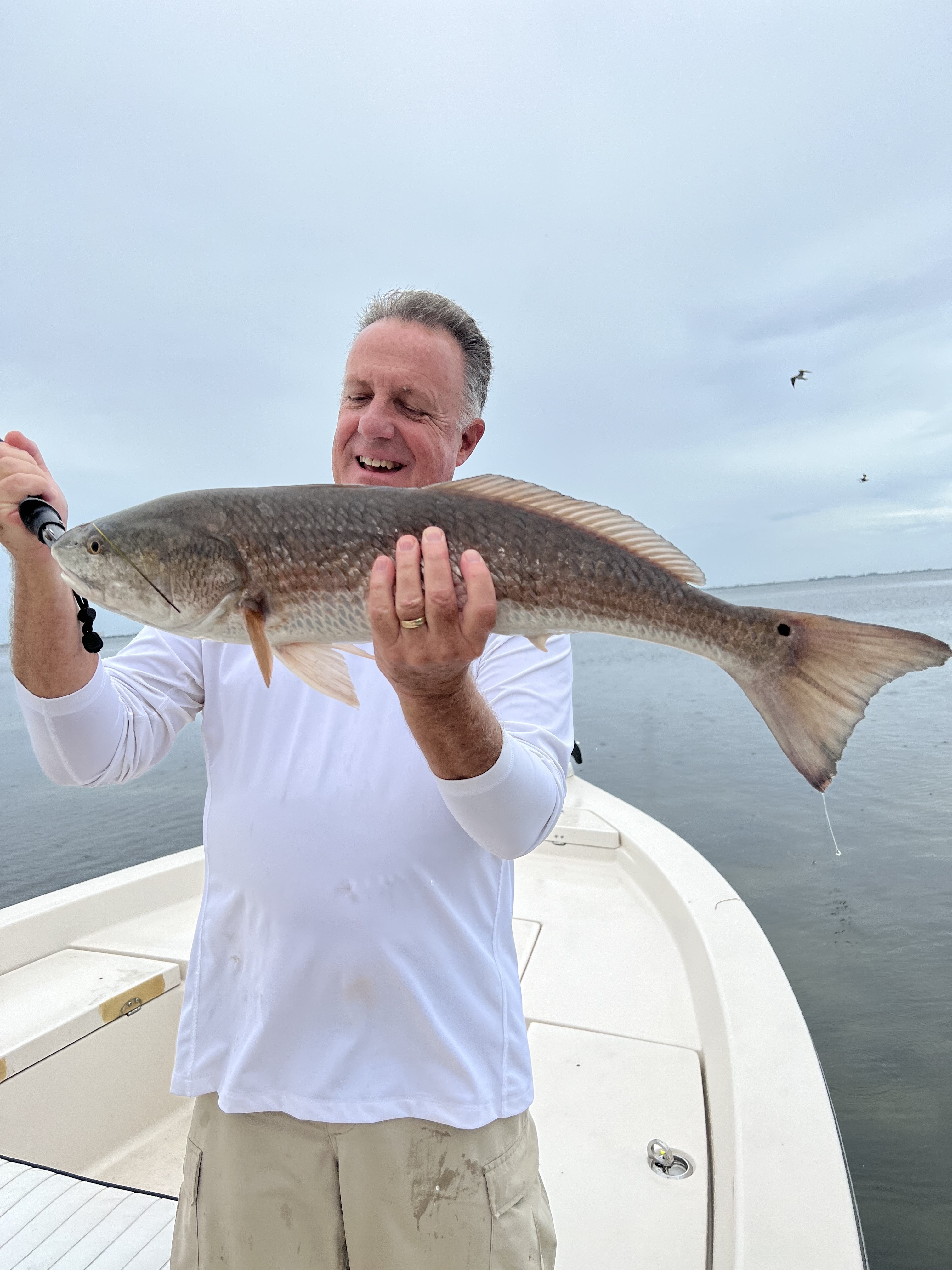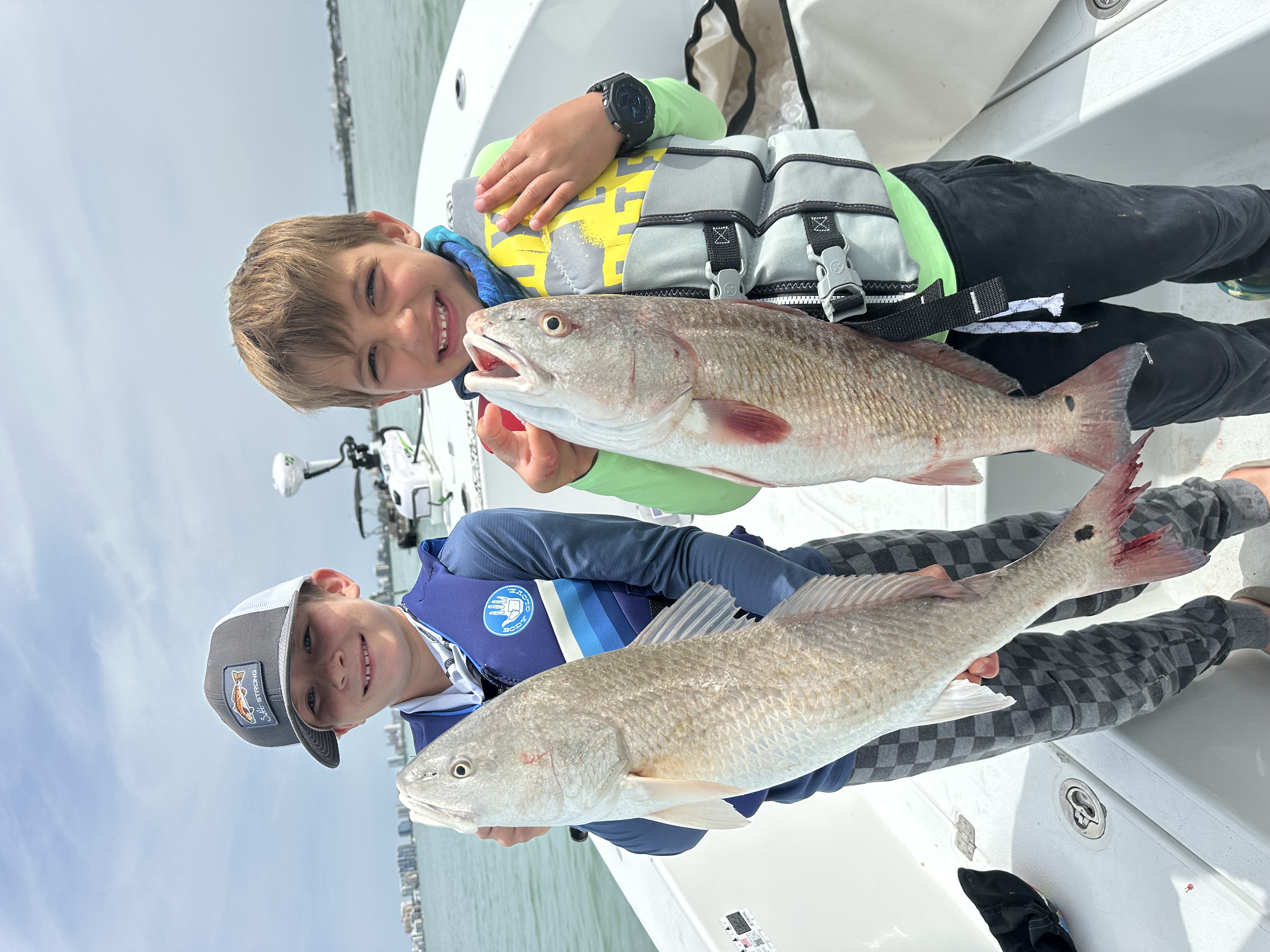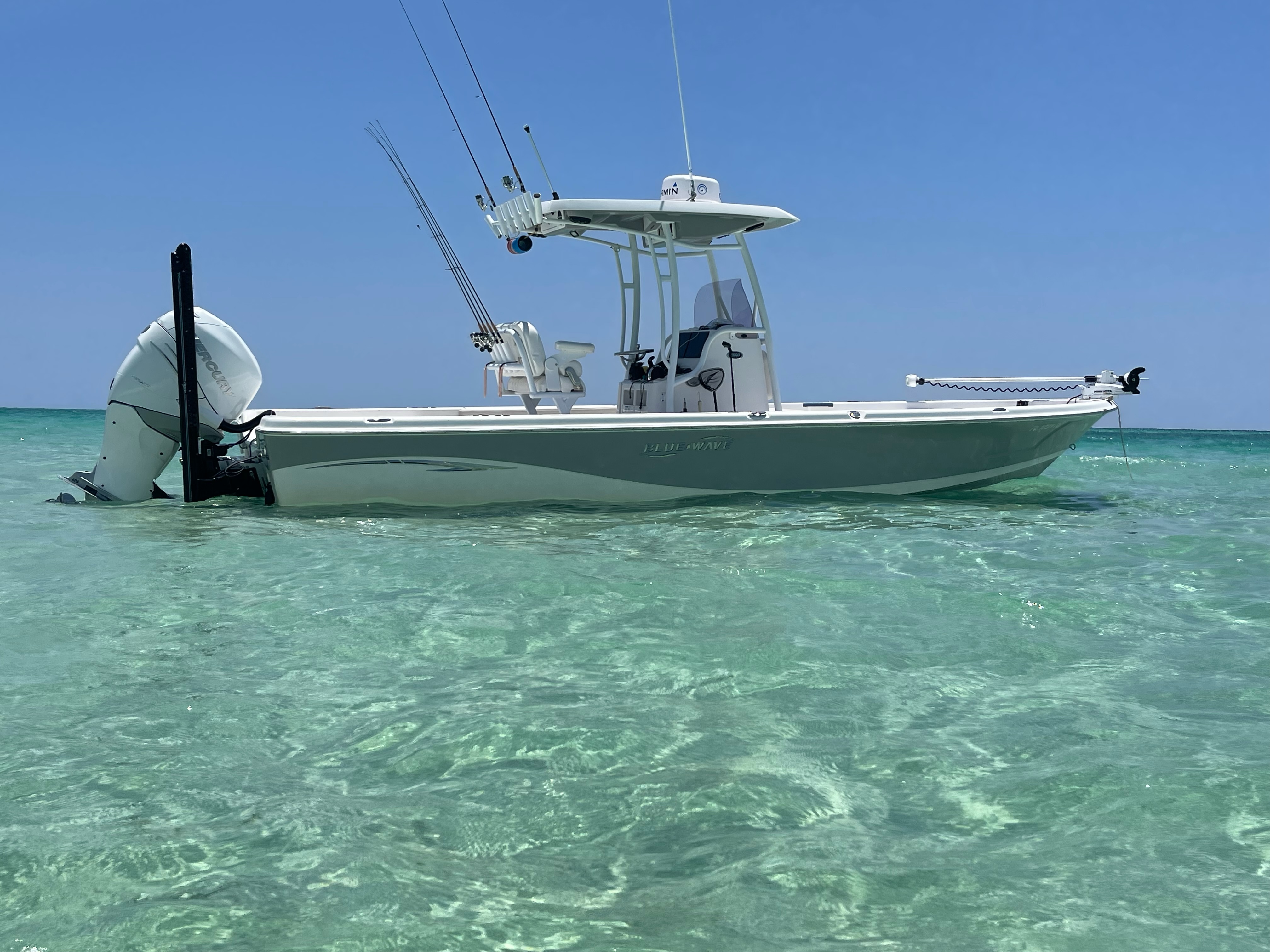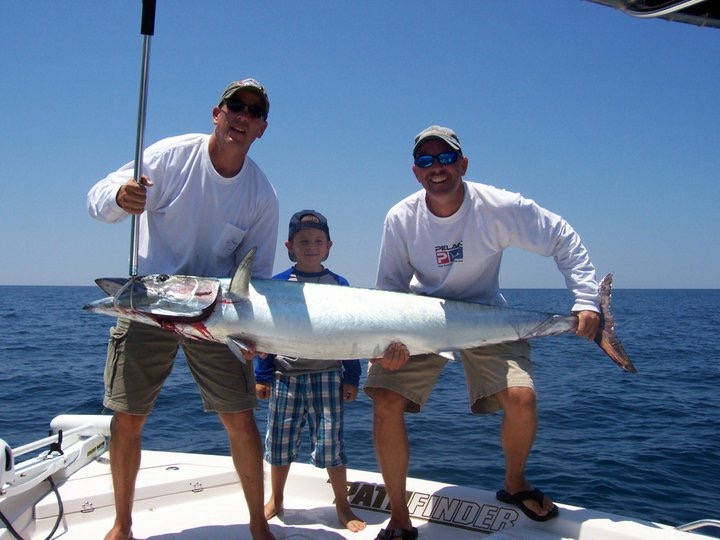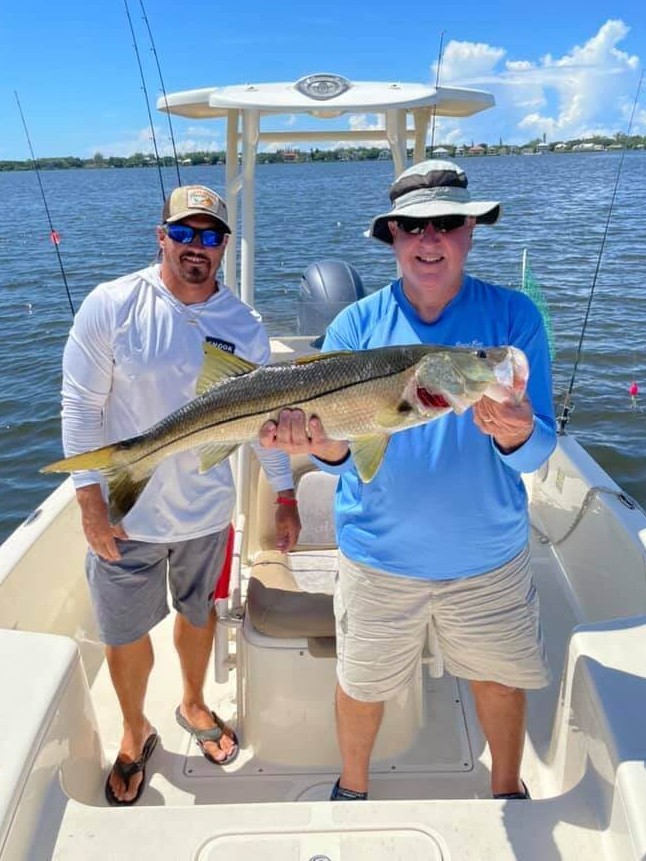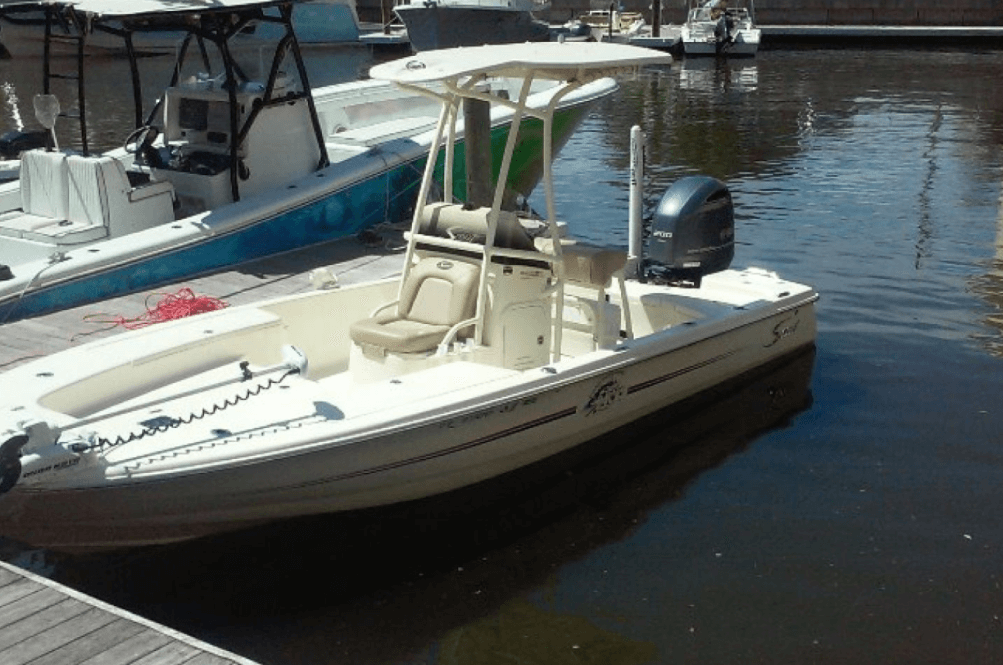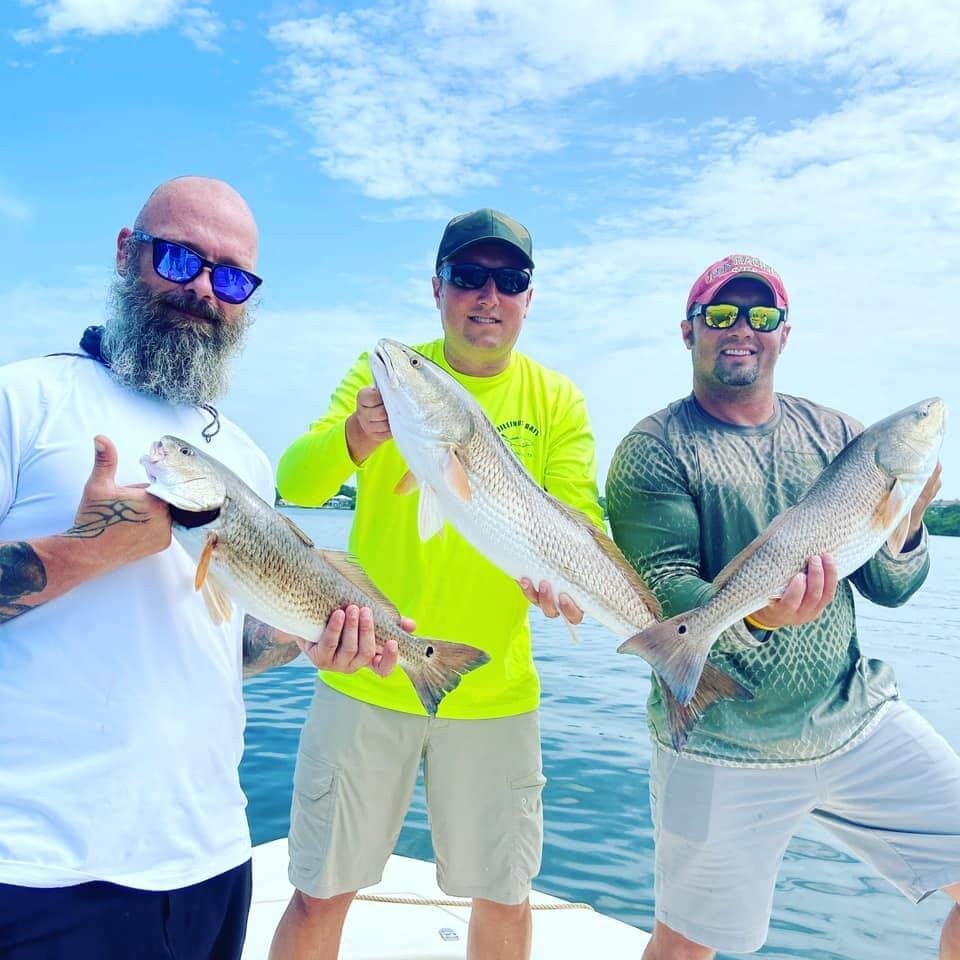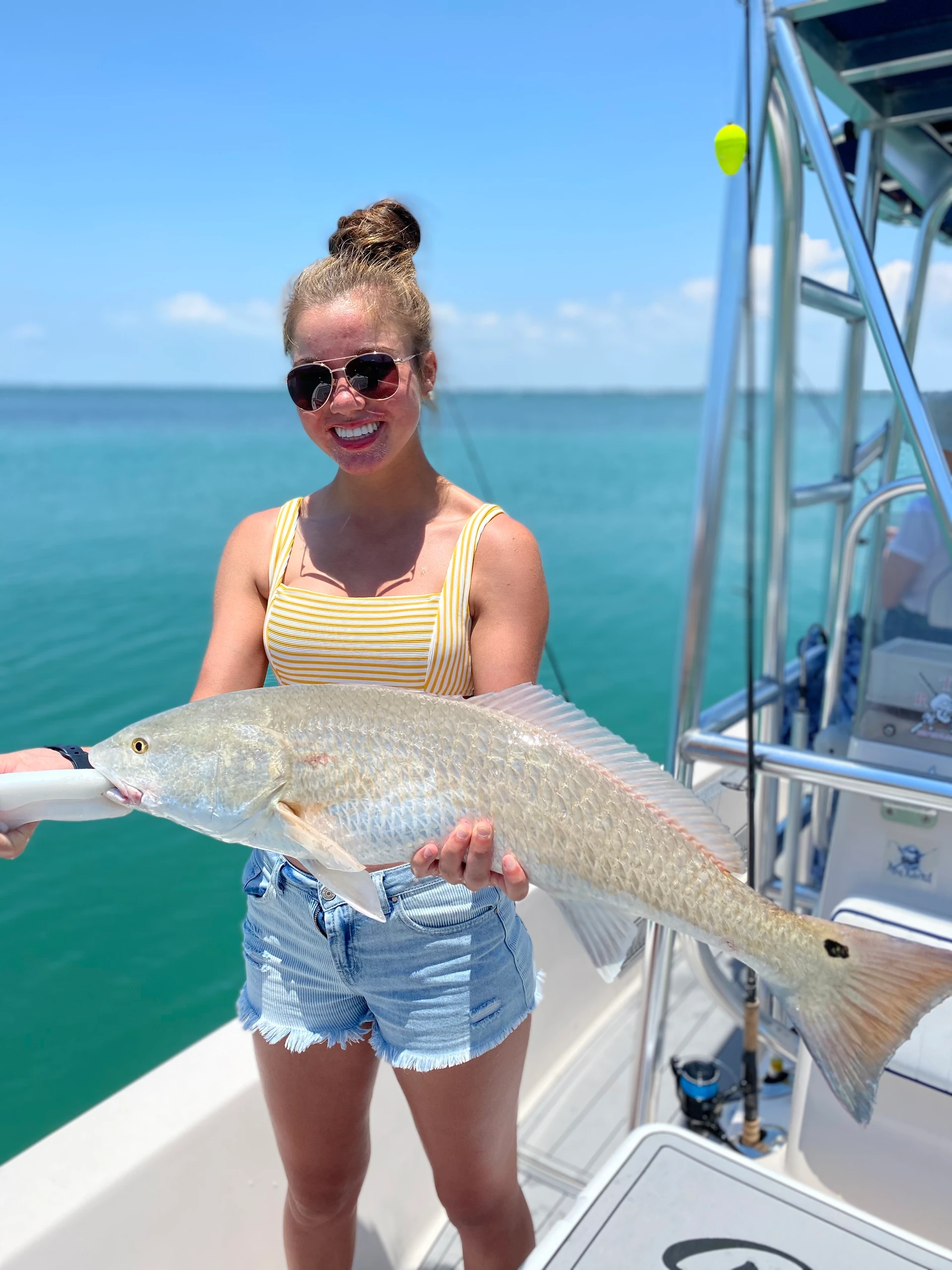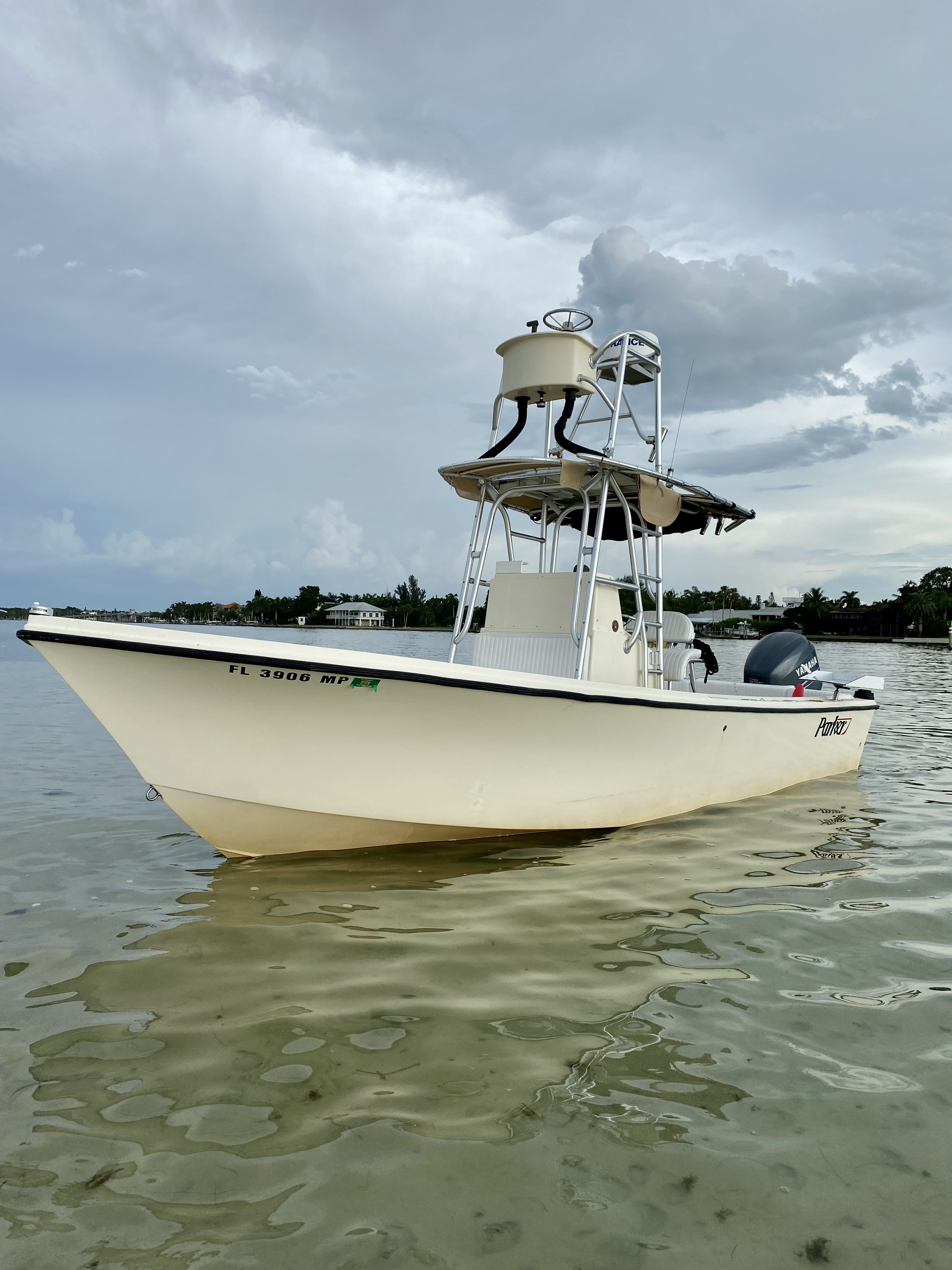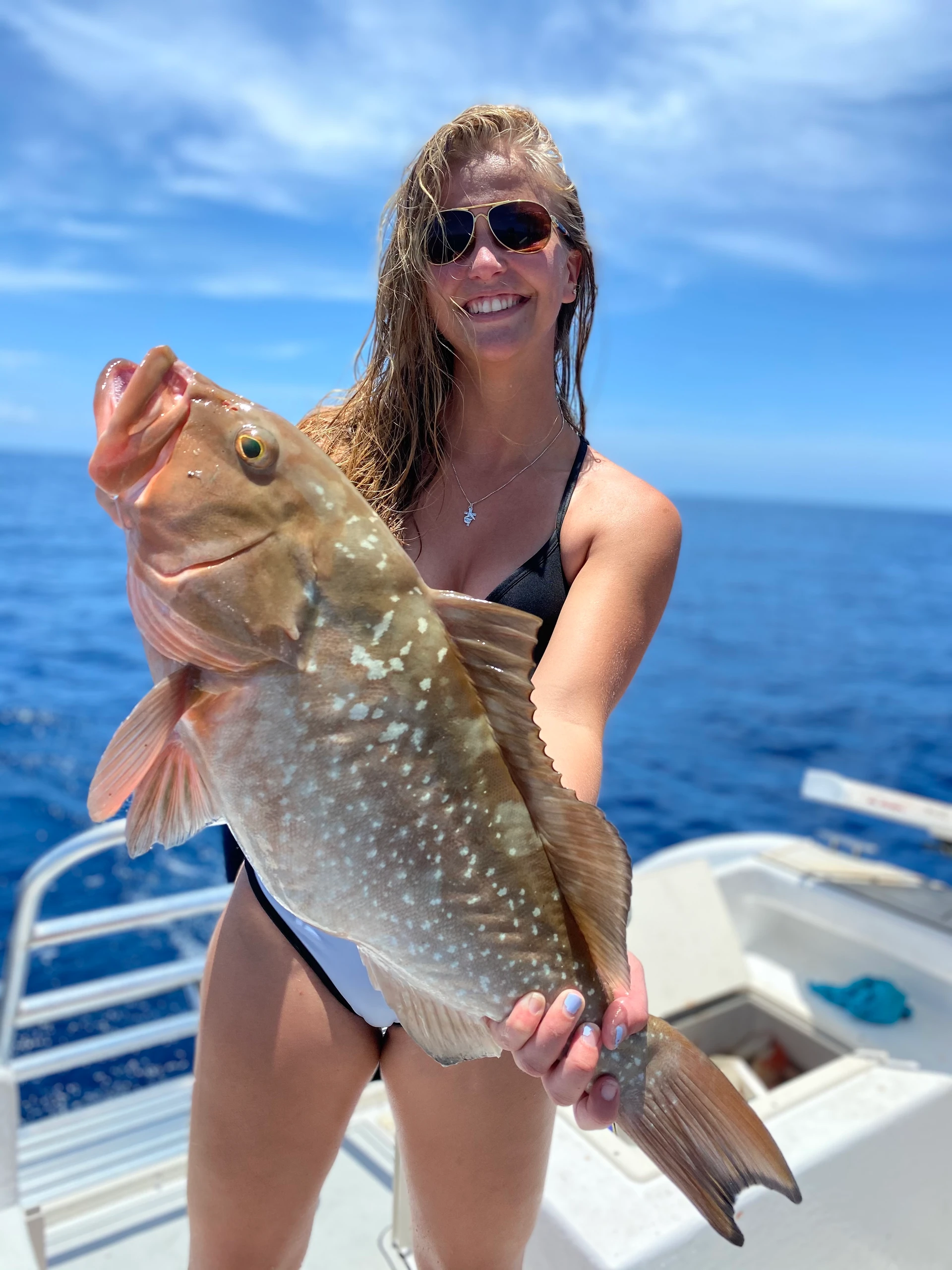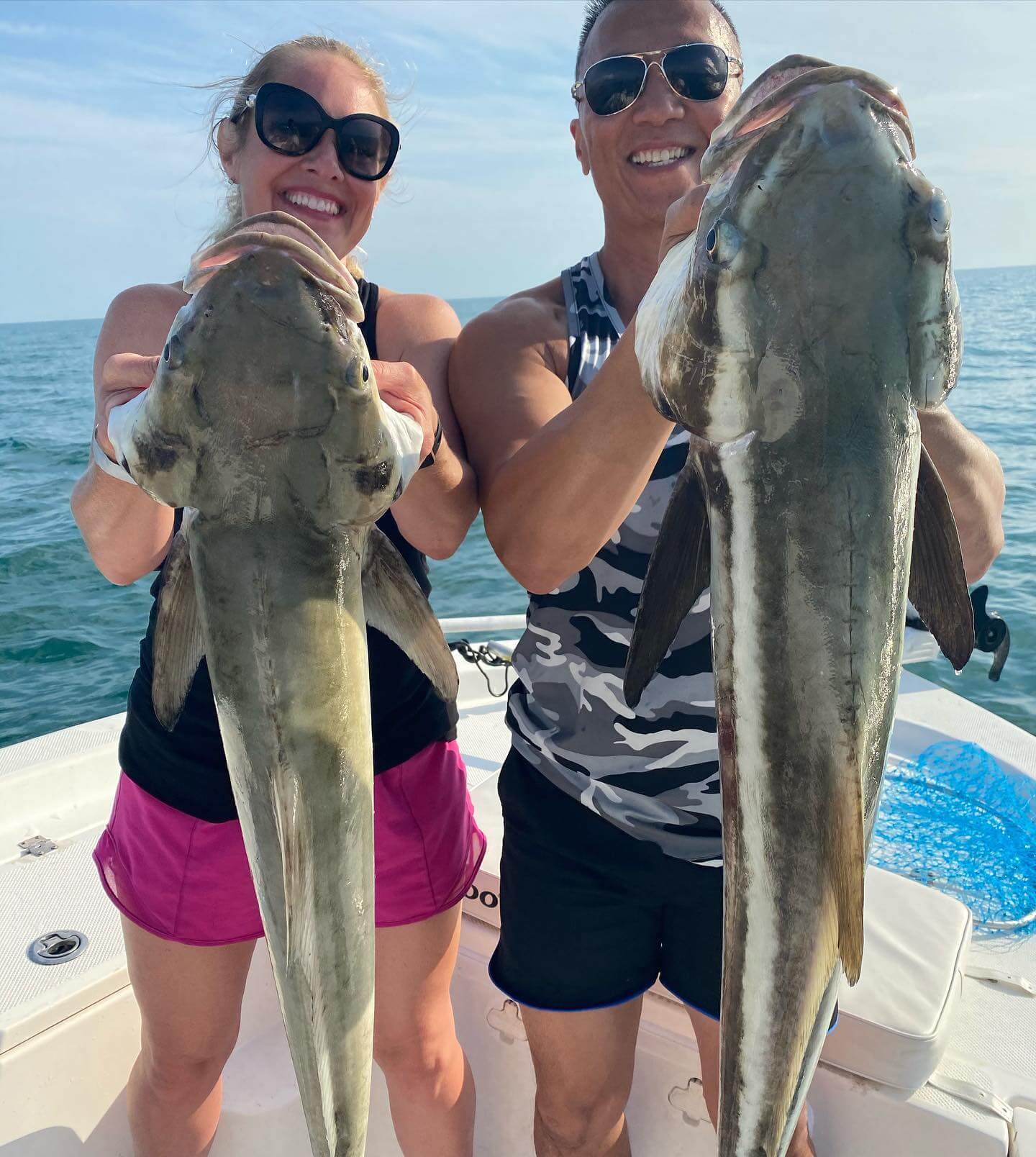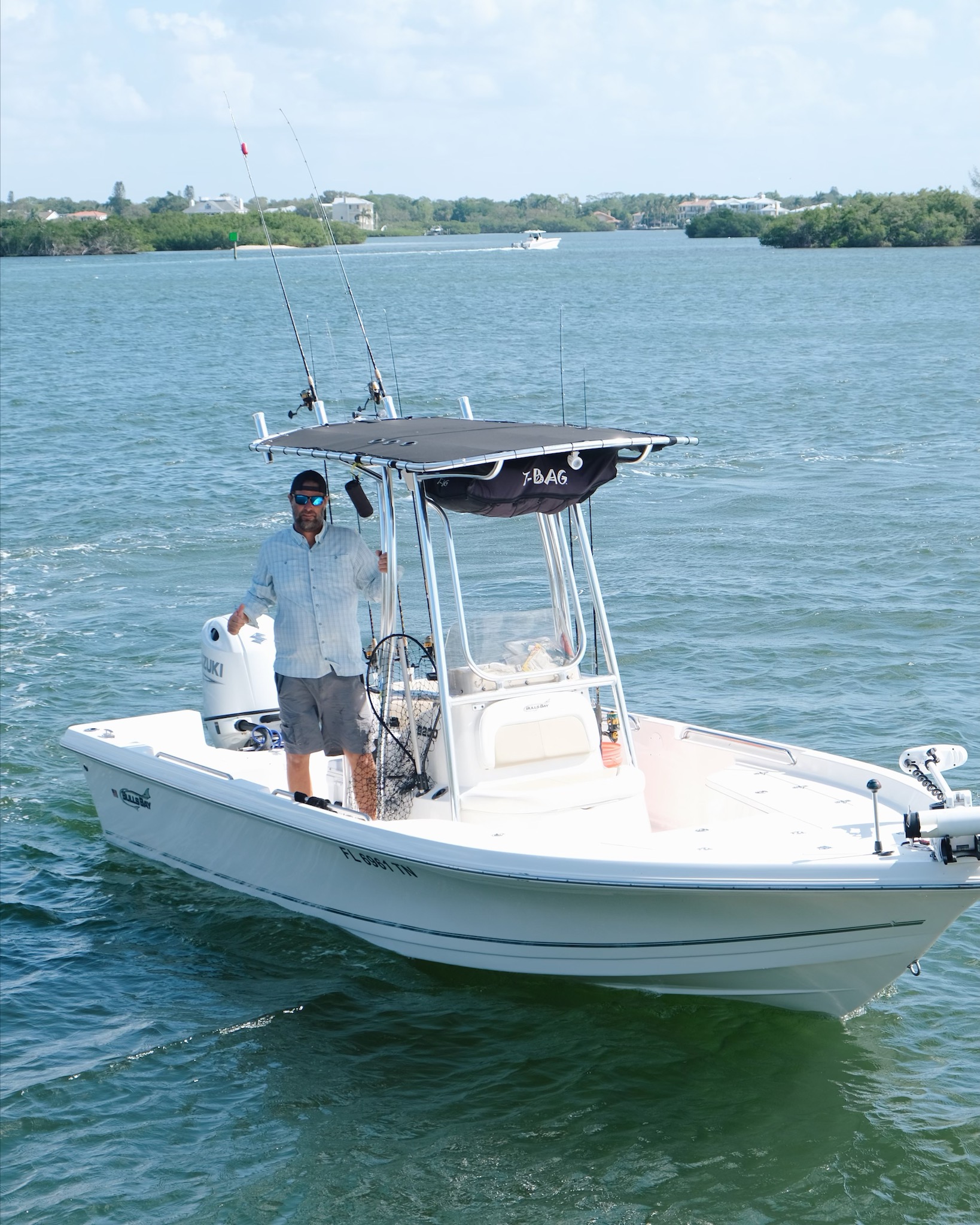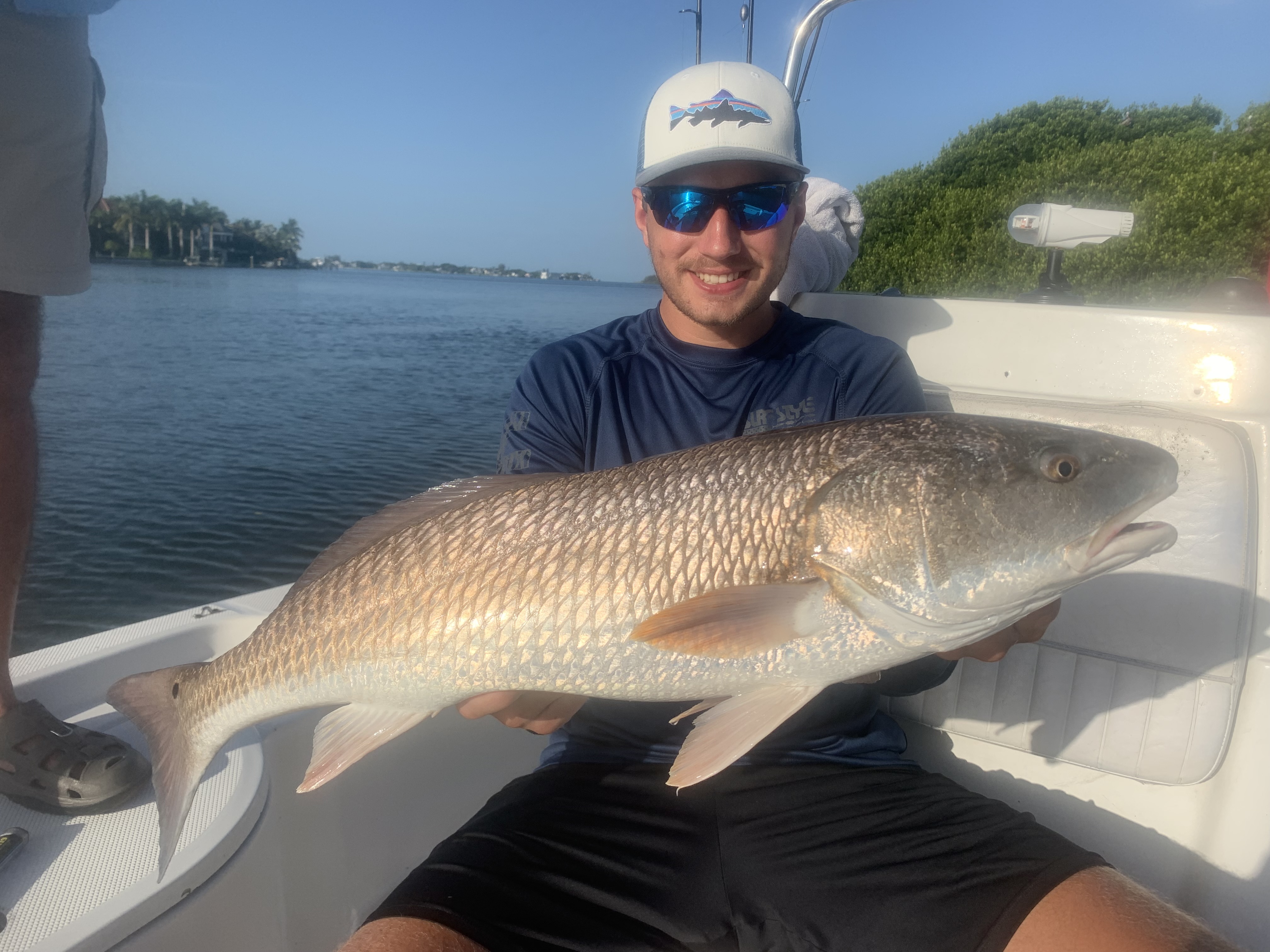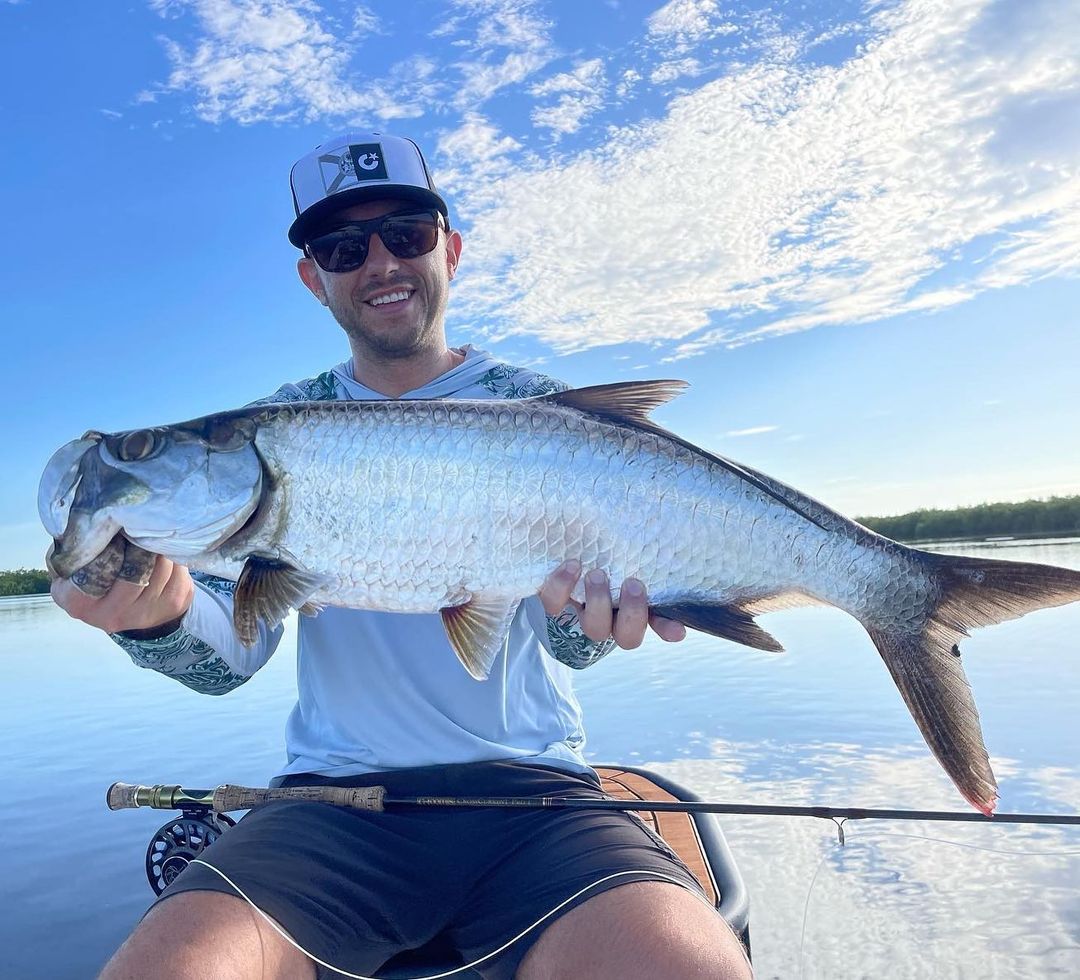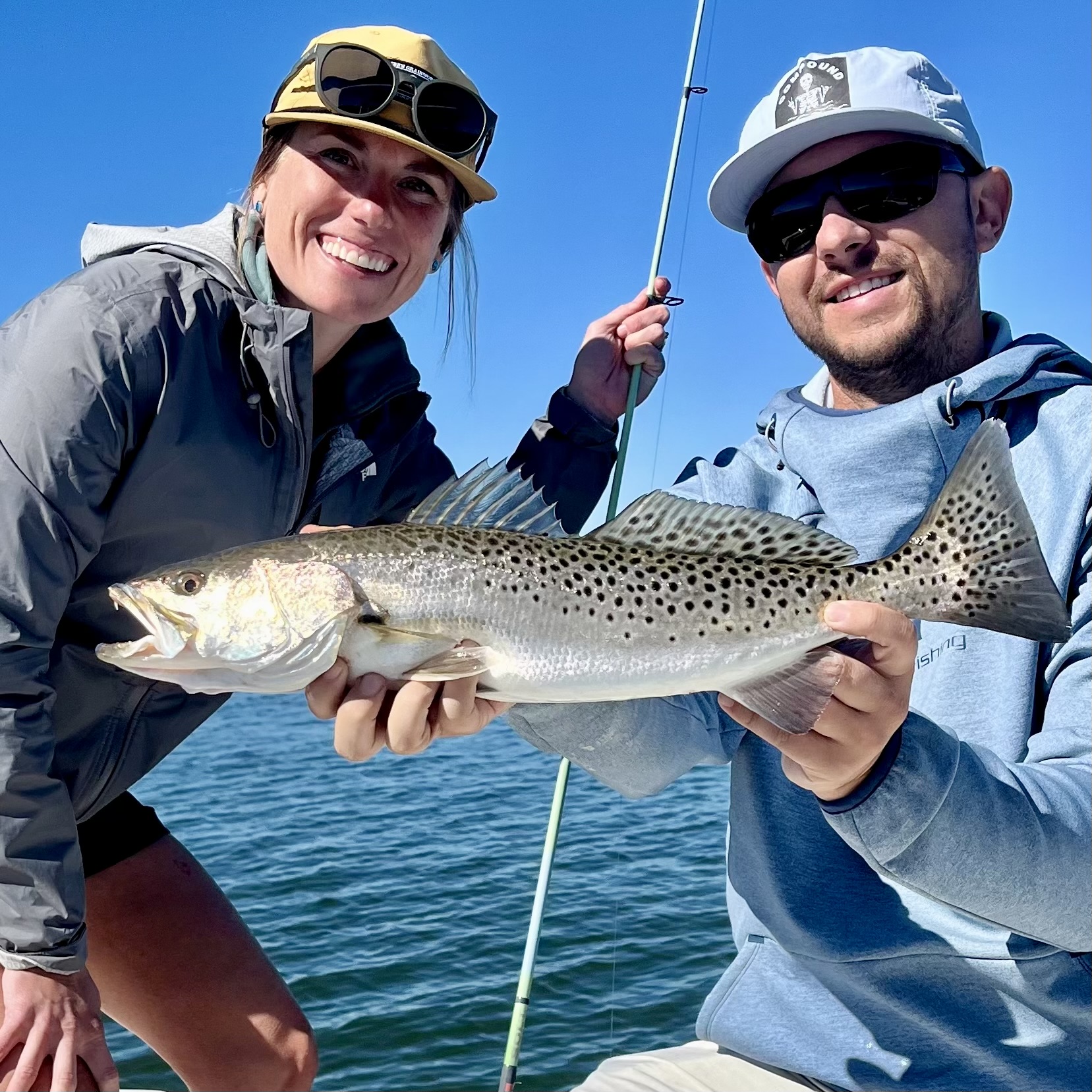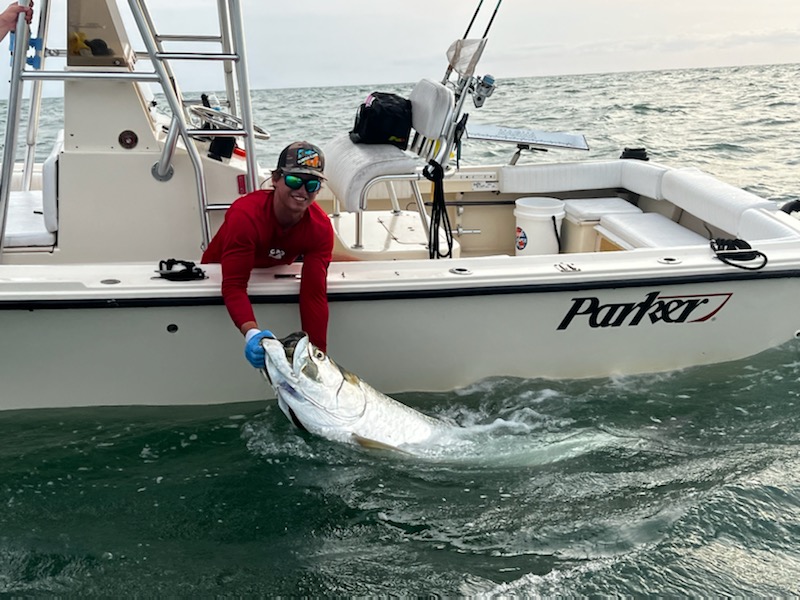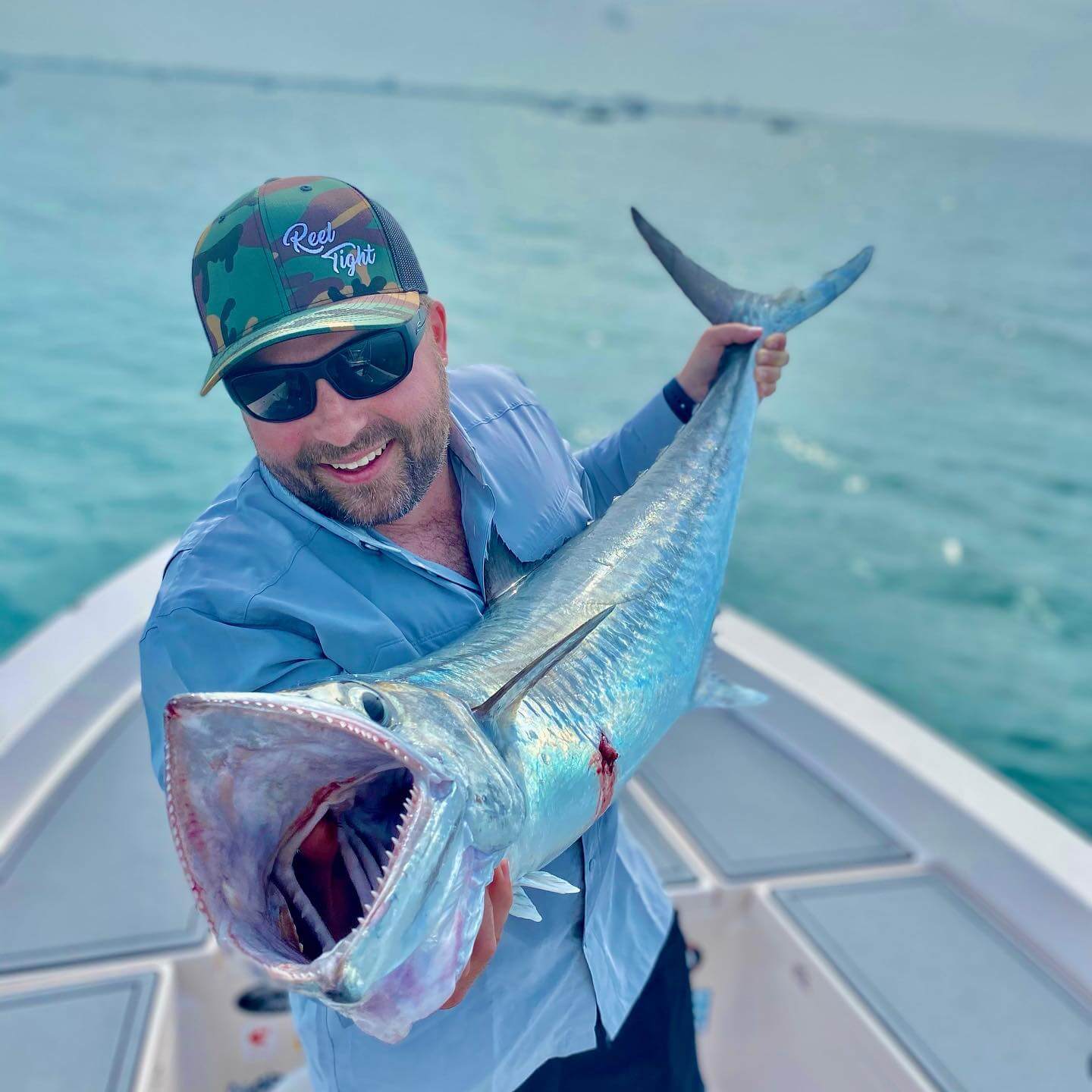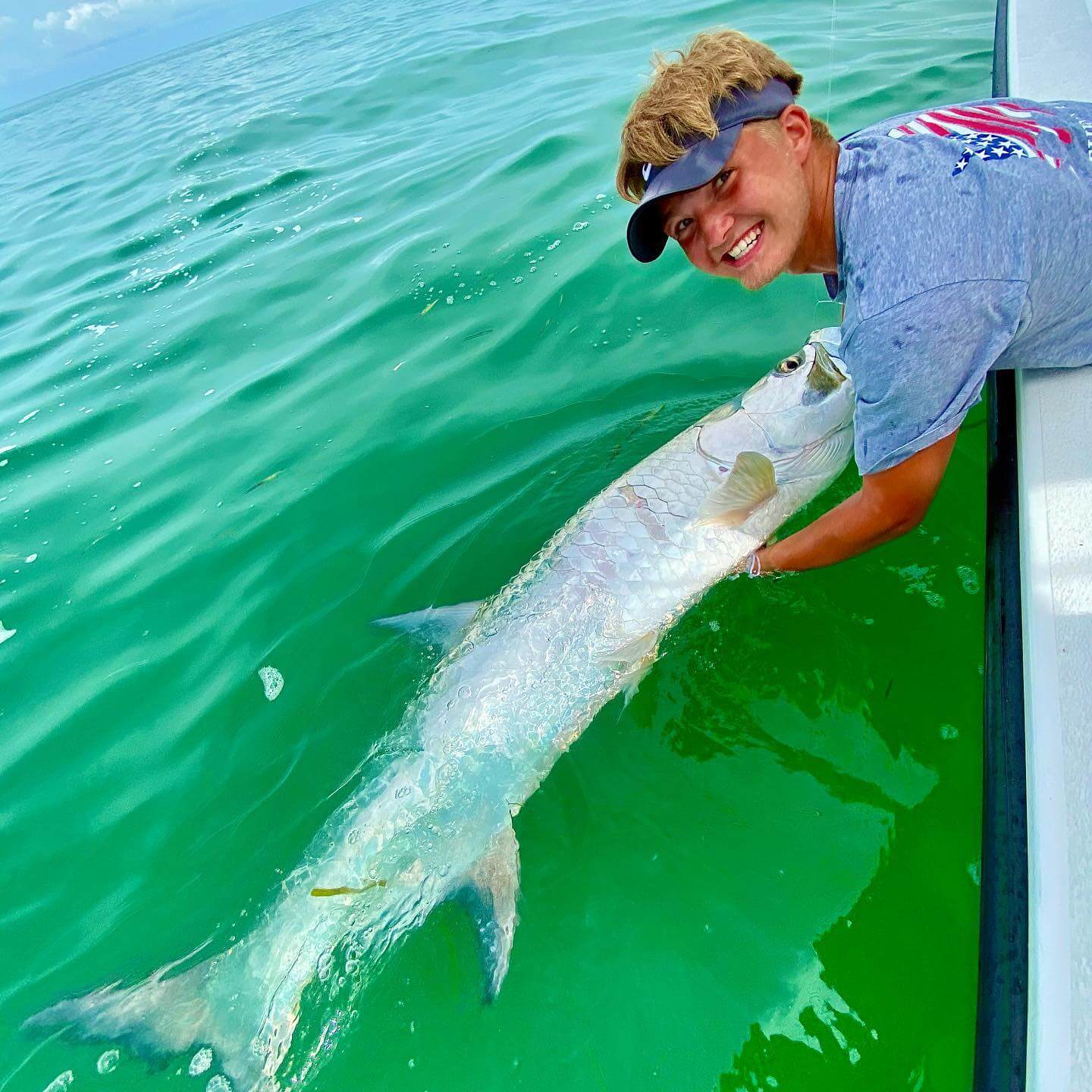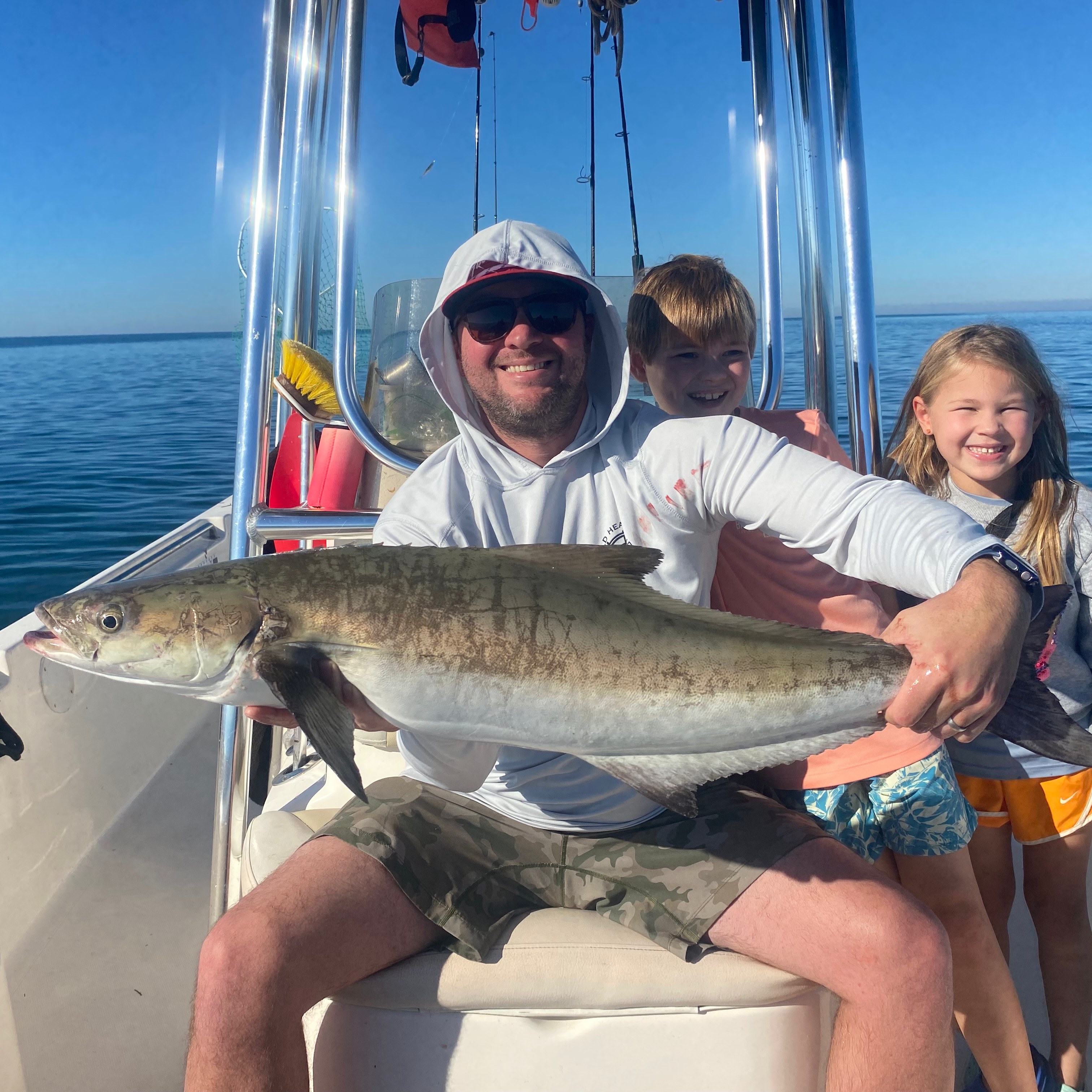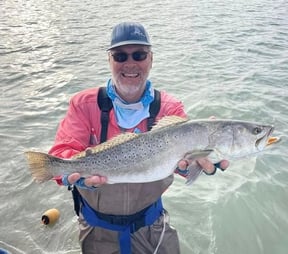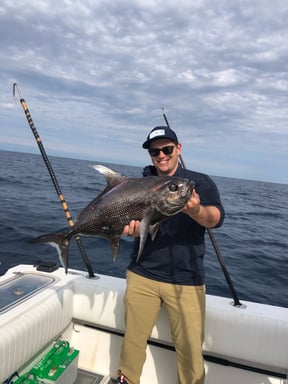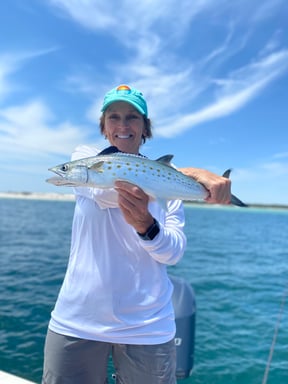Inshore, Nearshore, Jetty in Sarasota
Sarasota’s Premier Fishing Trip
Inshore, Nearshore Fishing in Sarasota
Fishing Inshore/Nearshore
Deep Sea Fishing in Panama City Beach
PCB Fishing Adventure
Inshore, Nearshore Fishing in Sarasota
Bountiful Backwaters Of Sarasota
Inshore, Nearshore, Flats in Sarasota
Sarasota Inshore/Nearshore
Inshore, Nearshore Fishing in Sarasota
Sarasota 1/2 Day Trip - 22’
Inshore, Nearshore, Flats in Sarasota
Sarasota Bay Fly & Light Tackle
Inshore, Nearshore, Flats in Sarasota
Tarpon Trips Sarasota
Inshore, Nearshore Fishing in Sarasota
Chasing Monsters - 24’ Pathfinder
Inshore, Nearshore Fishing in Sarasota
Kid's Trip
We started Captain Experiences to make it easy to book fishing and hunting guides around the world. With over 2,000 Damn Good Guides, our platform makes finding and booking a trip seamless. Head here to check out our trips.
Sarasota, Florida is a popular destination for anglers looking to catch a variety of fish species. Here are the top 10 fish species to catch in Sarasota, along with information on the best season to catch them, rules and regulations, where they can be found, what kind of bait to use, and whether they're good to eat.
If you're looking to target any of these popular fish, there are tons of skilled Sarasota Fishing Charters to choose from.
Popular Inshore Fish in Sarasota
1. Snook
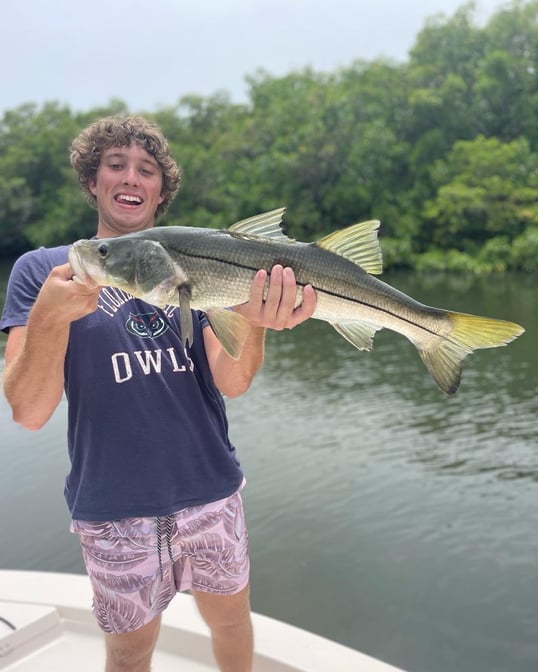
Snook are a popular game fish in Sarasota, Florida. The best time to catch them is from April to October. Snook can be found around the mangrove-lined shorelines, bridges, and passes. The biggest snook ever caught in Florida weighed 53 pounds and was caught in Ft. Myers. To catch them, you should use live bait such as shrimp, pinfish, or whitebait. Snook are delicious and are often served in restaurants.
The snook season in Sarasota, Florida varies depending on time of year. The season is closed, meaning catch and release only, from December 1 to the end of February and from May 1 to August 31 in Gulf state and federal waters, including Sarasota.
The bag limit for snook in Florida is one fish per person per day. The fish must be between 28 and 33 inches in total length to be harvested. In Gulf of Mexico state waters, anglers are required to have a snook permit and may only keep snook during open season.
2. Redfish

Redfish, also known as red drum, is another popular fish species in Sarasota. The best season to catch them is from late summer to early winter. Redfish can be found in shallow flats, oyster bars, and mangrove shorelines. The biggest redfish ever caught in Florida weighed 52 pounds and was caught in Cocoa Beach. To catch them, you should use live or cut bait such as shrimp, crabs, or mullet. Redfish is a popular game fish and is also edible.
The redfish season in Sarasota is open year-round, but there are specific regulations for bag limits and size limits. As of 2023, the bag limit for redfish in Sarasota Bay and its tributaries is 1 fish per person per day, with a slot limit of 18 to 27 inches. It's important to note that fishing regulations can change over time, so it's always a good idea to check the most current regulations with the Florida Fish and Wildlife Conservation Commission (FWC) before heading out to fish.
3. Trout
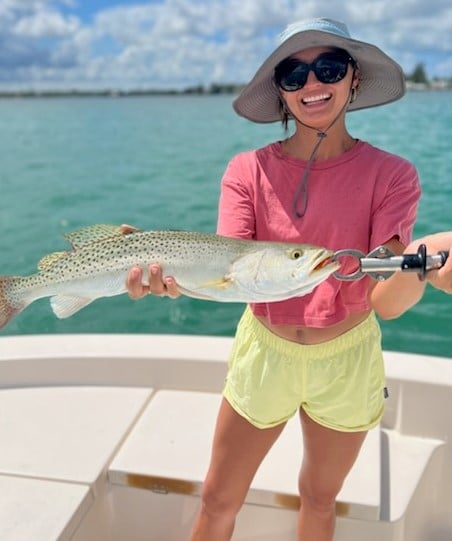
Spotted seatrout, also known as speckled trout or just "trout," is a common fish species in Sarasota. The best season to catch them is from fall to spring. Trout can be found in shallow grass flats, channels, and around structure such as docks and bridges. The biggest trout ever caught in Florida weighed 17 pounds and was caught in Ft. Pierce. To catch them, you should use live bait such as shrimp, pilchards, or pinfish. Trout is a popular sportfish and is also edible.
Similar to redfish, the spotted seatrout season in Sarasota is open year-round with certain restrictions. As of 2023, the current bag limit for trout in Sarasota is 3 fish per person per day, with a minimum size limit of 15 inches and a maximum size limit of 19 inches. It's important to release any speckled sea trout that fall outside of this size range, as well as any oversized fish that exceed the maximum size limit.
4. Flounder
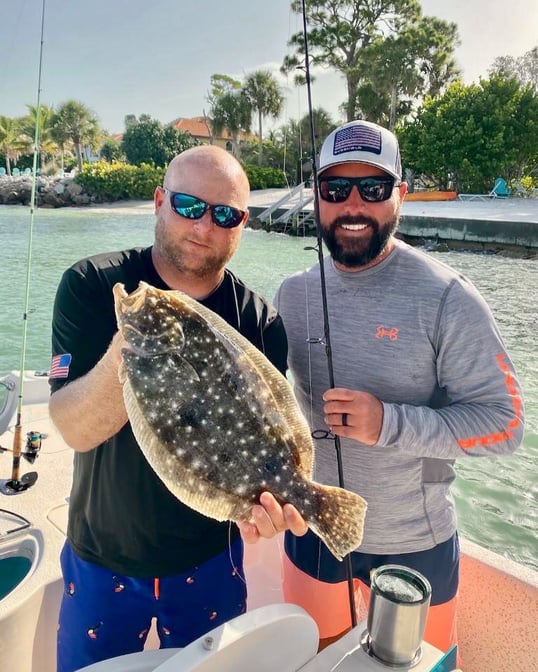
Flounder are flatfish that can be found in Sarasota's inshore waters. The best season to catch them is from late summer to fall. Flounders can be found on sandy bottoms near structure such as docks and bridges. The biggest flounder ever caught in Florida weighed 20 pounds and was caught in Pensacola. To catch them, you should use live bait such as shrimp or mud minnows. Flounder is a popular game fish and is also edible.
The flounder season in Sarasota, Florida is open year-round, except for October 15 - November 30 as of 2023. As for the bag limits, in the Gulf of Mexico, including Sarasota, the daily bag limit for flounder is 5 fish per person, with a minimum size limit of 14 inches.
5. Tarpon
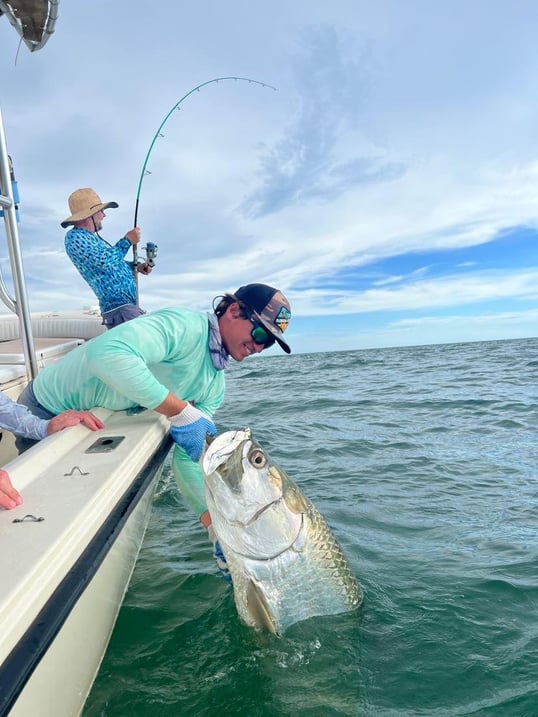
The tarpon is a popular game fish in Sarasota, known for its acrobatic jumps and strong fight. Tarpon season typically runs from late April through September, with peak season being in May and June. During this time, tarpon migrate to the area to spawn in the warm waters of the Gulf of Mexico. Tarpon is a catch-and-release fishery. A harvest tag is only allowed once a year in the instance that a potential IGFA or state record has been broken.
Tarpon can be found in passes, channels, and along beaches. The biggest tarpon ever caught in Florida weighed 286 pounds and was caught in Key West. To catch them, you should use live bait such as crabs, pinfish, or threadfin herring.
Popular Offshore Fish in Sarasota
6. Grouper:
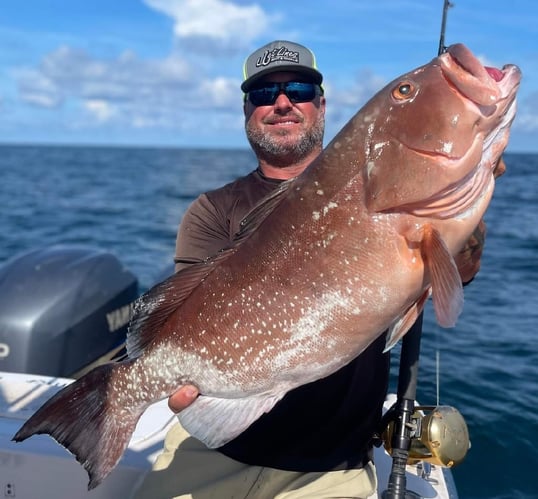
Grouper are a popular fish species in Sarasota, and they can be found throughout the year, although the best season is from April through November.
There are several species of grouper that can be caught in Sarasota. Some of the most common species include red grouper, black grouper, gag grouper, and scamp grouper.
Red grouper is the most common species caught in this area, and they can grow up to 3 feet in length and weigh up to 50 pounds. Black grouper can also be caught and they can reach sizes up to 5 feet in length and weigh over 100 pounds. Gag grouper can grow up to 3 feet in length and weigh up to 80 pounds, while scamp grouper typically range in size from 5-15 pounds.
In terms of regulations, there are specific size limits and bag limits that apply to each species of grouper. As of 2023, for red grouper, the minimum size limit is 20 inches total length, and the daily bag limit is two fish per person. The Gulf season is open year-round. For black grouper, the minimum size limit is 24 inches total length, and the daily bag limit is four fish per person. This season is also open year round. Gag grouper have a minimum size limit of 24 inches total length, with a daily bag limit of two fish per person, and an open season in the Gulf from September 1 to November 10. Scamp grouper have a minimum size limit of 16 inches total length, and a daily bag limit of four fish per person. Similar to red and black grouper, the season for scamp grouper is year-round.
It's important to check the current regulations before heading out to fish for grouper in Sarasota, as they can change frequently to ensure the sustainability of the fishery.
The largest grouper ever caught in Florida weighed 680 pounds and was a Goliath grouper. Goliath groupers are protected in Florida waters and cannot be harvested. They are a slow-growing and long-lived species that can reach over 8 feet in length and weigh over 800 pounds.
Grouper can actually be caught in Sarasota both inshore and offshore, depending on the time of year and the species of grouper you are targeting.
Inshore grouper fishing in Sarasota typically involves targeting the smaller species such as gag and red grouper around natural and artificial reefs, rock piles, and other structure in the bay and nearshore waters. Offshore, you can find larger species such as black grouper and goliath grouper on deeper reefs and wrecks.
To catch grouper, you will need to use heavy tackle and large baits, such as live or cut fish, squid, or octopus. You can fish for grouper using a variety of techniques including bottom fishing with a traditional rig, jigging with a vertical jig, or trolling with diving plugs or deep-diving lures.
7. Snapper

Snapper are another popular fish species in Sarasota, and they can be found in large numbers during the summer months. There's a variety of snapper species that can be caught in Sarasota, including red snapper, cubera snapper, mangrove(gray) snapper, mutton snapper, lane snapper, yellowtail snapper, and vermilion snapper.
The fishing regulations and restrictions can vary depending on the specific species of snapper, as well as the location and time of year. You can stay up to date with red snapper season regulations here. Otherwise, be sure to check out local fishing regulations before you hit the water.
The largest snapper ever caught in Florida is a controversial subject, as there are several different species of snapper that are commonly found in Florida's waters, and records are often disputed or unverified. Among the fan favorite red snapper, the largest on record in Florida weighed in at 46 pounds, 8 ounces, and was caught off Destin in 1985.
Snapper can be found around rocky ledges and artificial reefs. Snapper are attracted to live or fresh bait such as shrimp, squid, or small fish. Use a rig with a small hook and a weight to keep the bait close to the bottom.
8. Kingfish
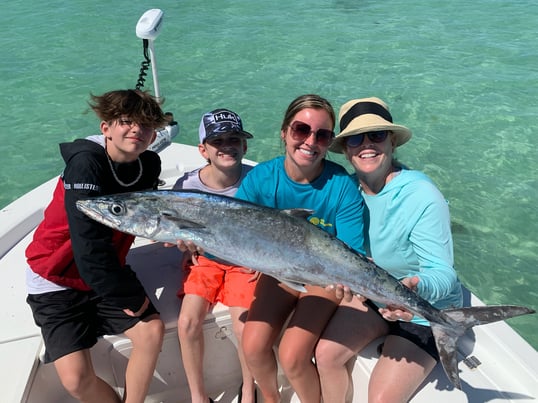
Kingfish, or king mackerel, are a fast and aggressive fish species that are abundant in Sarasota during March and April, and again from October through November. The biggest kingfish ever caught in Florida weighed 90 pounds. These trophies can be found near offshore wrecks and artificial reefs. The best bait for kingfish is live bait, such as blue runners or sardines.
In the Gulf of Mexico, the bag limit for king mackerel is three fish per person, and the minimum size limit is 24 inches fork length. The season is open year year round, until a certain quota is met. You can check with FWC or NOAA, depending on if you're fishing state or federal waters.
9. Mahi-mahi
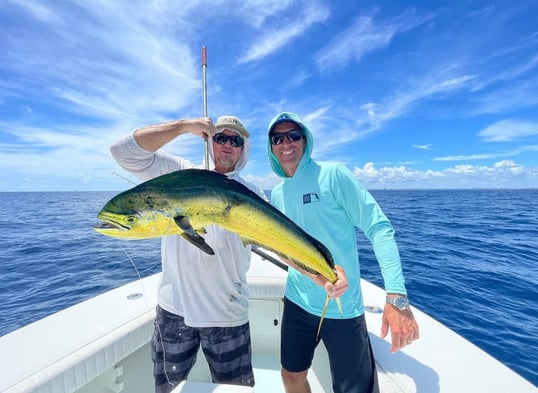
Mahi-mahi, also known as dolphin fish or dorado, are a popular offshore fish species in Sarasota. The peak mahi mahi season in Florida runs from late spring to early fall, with the best months being May through September. However, mahi mahi can be caught year-round in Florida, as they are found in Florida waters throughout the year.
As of 2023, according to the Florida Fish and Wildlife Conservation Commission, the daily bag limit on mahi mahi per angler is 10, or 60 per boat, depending on which is less for Gulf state waters. For Atlantic state waters, the limit is 5 fish per person or 30 per boat, depending on which is lower for private recreational anglers. For charter boats (for-hire vessels), the limit is the same, but the total vessel limit is maxed out at the number of customers fishing times the individual bag limit. The captain and crew cannot count towards this total.
Mahi-mahi can be found around floating debris and weed lines. The best bait for Mahi-mahi is live bait, such as pilchards or ballyhoo.
The Florida state record for the largest mahi ever caught is 81 pounds, caught off the coast of Key West in 1998 by angler Mark Johnson. However, there have been reports of larger Mahi Mahi being caught in Florida waters that did not qualify for the official record due to not meeting certain criteria.
10. Tuna
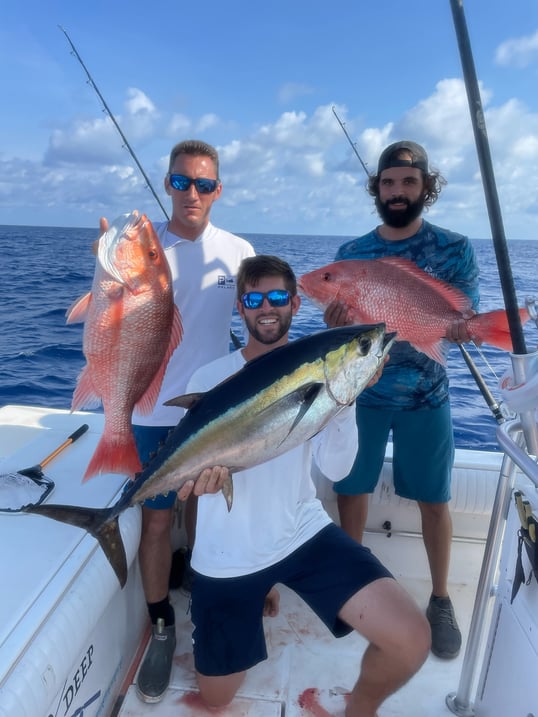
Tuna are a highly prized offshore fish species in Sarasota that can be caught throughout the year. The best bait for tuna is live bait, such as pilchards or blue runners. Several tuna species can be caught in Sarasota, with the most common being blackfin tuna, yellowfin tuna, and skipjack tuna.
Blackfin tuna are small to medium-sized tunas that typically weigh between 5-40 pounds. They are known for their delicious, mild flavor and are often found near offshore reefs and oil rigs. Yellowfin tuna are larger than blackfin tuna, and can weigh up to 400 pounds. They are known for their firm, meaty texture and are often found in deeper waters offshore. Skipjack tuna are the smallest of the three species, typically weighing between 4-8 pounds. They are known for their strong flavor and are often used for canning.
The biggest Tuna ever caught in Florida is the Atlantic bluefin tuna. The current Florida state record for Atlantic bluefin tuna is 877 pounds, caught by Rick Whitley off the coast of Destin, Florida in 2017.
Offshore Species in Sarasota
In general, the best way to catch these fish species is by trolling or bottom fishing with live bait or lures. It's also important to have the right fishing gear, such as heavy-duty rods and reels, to handle these large fish.
All of these fish species are edible, and many anglers consider them to be some of the best-tasting fish in the ocean. However, it's important to follow local fishing regulations and size limits, as well as proper handling and cooking techniques, to ensure that the fish is safe to eat.
Hannah Shebat
Updated on August 1, 2023

August 21, 2023

March 8, 2022

May 13, 2024
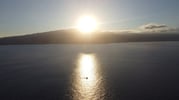
April 26, 2022
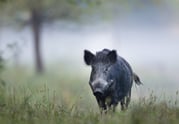
November 7, 2023
Related Articles
January 19, 2023
August 2, 2023
June 12, 2024
Featured Locations
- Fishing Charters Near Me
- Austin Fishing Guides
- Biloxi Fishing Charters
- Bradenton Fishing Charters
- Cabo San Lucas Fishing Charters
- Cancun Fishing Charters
- Cape Coral Fishing Charters
- Charleston Fishing Charters
- Clearwater Fishing Charters
- Corpus Christi Fishing Charters
- Crystal River Fishing Charters
- Dauphin Island Fishing Charters
- Daytona Beach Fishing Charters
- Destin Fishing Charters
- Fort Lauderdale Fishing Charters
- Fort Myers Fishing Charters
- Fort Walton Beach Fishing Charters
- Galveston Fishing Charters
- Gulf Shores Fishing Charters
- Hatteras Fishing Charters
- Hilton Head Fishing Charters
- Islamorada Fishing Charters
- Jacksonville Fishing Charters
- Jupiter Fishing Charters
- Key Largo Fishing Charters
- Key West Fishing Charters
- Kona Fishing Charters
- Lakeside Marblehead Fishing Charters
- Marathon Fishing Charters
- Marco Island Fishing Charters
- Miami Fishing Charters
- Montauk Fishing Charters
- Morehead City Fishing Charters
- Naples Fishing Charters
- New Orleans Fishing Charters
- New Smyrna Beach Fishing Charters
- Ocean City Fishing Charters
- Orange Beach Fishing Charters
- Panama City Beach Fishing Charters
- Pensacola Fishing Charters
- Pompano Beach Fishing Charters
- Port Aransas Fishing Charters
- Port Orange Fishing Charters
- Rockport Fishing Charters
- San Diego Fishing Charters
- San Juan Fishing Charters
- Sarasota Fishing Charters
- South Padre Island Fishing Charters
- St. Augustine Fishing Charters
- St. Petersburg Fishing Charters
- Tampa Fishing Charters
- Tarpon Springs Fishing Charters
- Venice Fishing Charters
- Virginia Beach Fishing Charters
- West Palm Beach Fishing Charters
- Wilmington Fishing Charters
- Wrightsville Beach Fishing Charters
